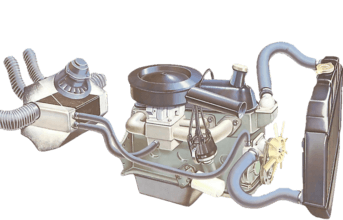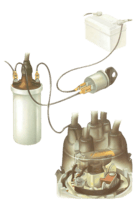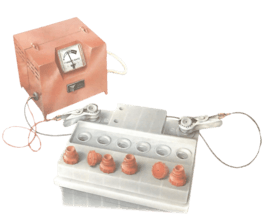Hydrometre

Two types of hydrometer are used in car maintenance, a battery hydrometer and an antifreeze hydrometer.
Both measure the specific gravity of the liquid (battery-cell electrolyte or antifreeze mixture), but are scaled differently and are not interchangeable.
Just enough liquid to move the float is sucked into the hydrometer float chamber; the reading is taken where the float breaks the surface of the liquid. There may be a figure scale or a colour or letter code, or both.
On an antifreeze hydrometer, the reading has to be converted to a percentage of antifreeze concentration, for which a chart is supplied with the hydrometer.
A hydrometer is an instrument used to measure the specific gravity (or relative density) of liquids; that is, the ratio of the density of the liquid to the density of water.
A hydrometer is usually made of glass and consists of a cylindrical stem and a bulb weighted with mercury or lead shot to make it float upright. The liquid to be tested is poured into a tall container, often a graduated cylinder, and the hydrometer is gently lowered into the liquid until it floats freely. The point at which the surface of the liquid touches the stem of the hydrometer is noted. Hydrometers usually contain a scale inside the stem, so that the specific gravity can be read directly. A variety of scales exist, and are used depending on the context.
Hydrometers may be calibrated for different uses, such as a lactometer for measuring the density (creaminess) of milk, a saccharometer for measuring the density of sugar in a liquid, or an alcoholometer for measuring higher levels of alcohol in spirits.
Read more on Wikipedia
Cet outil est utilisé dans
Toujours utiliser le bon type d'antigel pour votre voiture avec une dose correcte, sinon de la r...
The low-tension (LT), or primary-ignition, circuit consists of the battery, ignition switch, con...
Lors de petits déplacements fréquents, votre batterie peut rapidement s'user, et encore plus vite...



